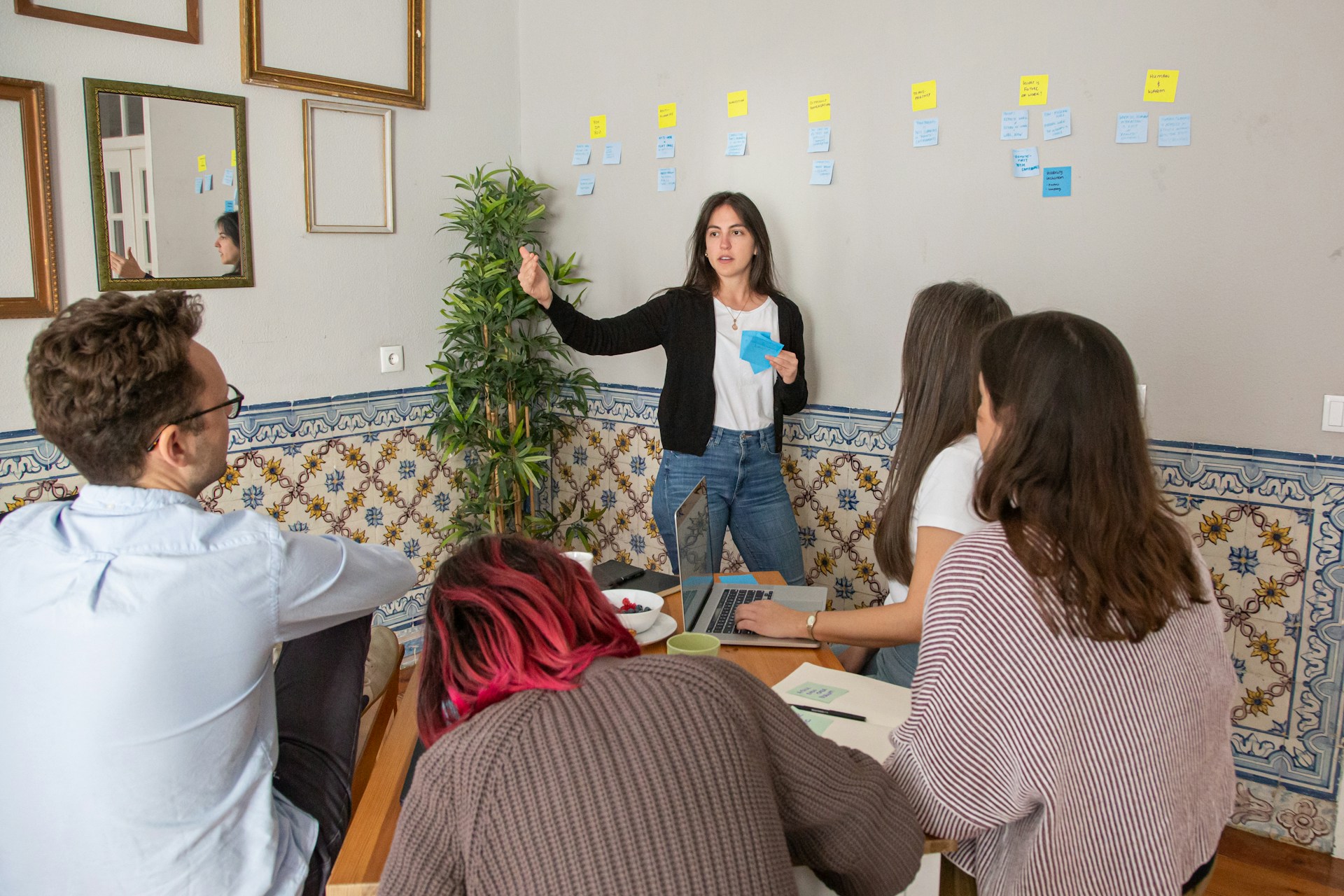Secrets to Successful L&D Programs from Top HR Leaders

Organisations are facing various internal and external challenges and Leadership & Development (L&D) programs have become key focus areas in dealing with them. The idea is to foster capacity development that allows employees to function optimally and gets them equipped to create innovative solutions.
However, the reality remains that not many of these programs have been successful due to various reasons. A Gartner 2019 study reveals that up to 70% forget the information they learn within a week of training, and 87% will forget it within a month.
Looking at the statistics, there is the question of whether the programs are truly as effective as intended and if they give maximum returns on the investment put into them. Since L&D programs can deliver proven results, how then can organisations ensure that they’re successful? In this guide we share learning secrets from Top HR leaders that you can apply, to ensure that L&D programs are effective and productive.
Secrets to Successful L&D Programs From the Lens of HR Leaders
There’s no denying that L&D programs are pivotal to any organisation’s future. This is because employees are beginning to prioritise organisations that invest in their development. With the talent market being more competitive than it has been in years, leaders must be innovative in ensuring talent retention and job satisfaction. The challenge however remains that leaders still have to evaluate how well these programs are contributing to the overall organisational objective or if they’re just another money-draining initiative.
Thankfully it’s easy to evaluate the relevance of an L&D program by examining your objectives and metrics. As opined by Forester Consulting in their Total Economic Impact Study, there are metrics to determine how successful L&D programs are, both qualitatively and quantitatively. To achieve a successful L&D program, it’s important to assess the following factors.
Information Overload
The increasing volume of information available to each individual is causing a type of anxiety known as information overload. In fact, 76% of respondents in an OpenText survey indicated that it has significantly put them under stress daily. 35% say it’s affecting their job performance and 30%, their satisfaction at work.
A common factor with many L&D programs is that they are mainly theoretical and do not impact enough knowledge to be able to transfer what’s being taught into the workplace setting.
Information overload due to excessive information available often leads to a reduced capacity to absorb what’s been taught. This affects quality learning for real-life applications and eventually leads to learning wastage.
To successfully tackle the information overload from an L&D program, there’s a need to recognize the need for power skills—a growth mindset, empathy, and self-awareness. Coaching is required to help employees develop. With this personalised approach, employees can begin to consciously apply the knowledge acquired from L&D programs in their jobs.
Employee Retention Through Talent Development
Since the wake of COVID-19, employees are beginning to reassess their working priorities. More common is the emphasis on not just what the employee has to offer the organisation, but also what the organisation has to offer the employee in terms of growth.
Seeing how fierce the competition for quality talent has become, the only viable way to get the best talents is to create them. A recent survey of 10,000 employees between March 2021 and 2022 showed that about 50% recorded they left their jobs because there were no development opportunities attached. In light of this, organisations looking to retain talents must put in the effort to develop their existing talent base to become top performers. There’s an increasing need to invest in your employees who will in turn give their best and stay loyal to the organisation.
If an organisation would be attracting new talents, it would be because they have a proven track record of creating development opportunities for their employees.
This reflects the need to move on from the notion that leadership & development training is exclusive to top organisational leaders. Organisations must understand that an all-inclusive L&D structure will positively impact it on all fronts instead of focusing on a select few.
When learning opportunities are provided for employees at all levels, it creates the opportunity to groom employees into leaders who can guarantee the future of the organisation.
Measuring a Holistic Learning & Development Function
It’s easy to assume that L&D programs are not effective if we’ve not been applying a holistic approach to determine the metrics. Focusing on quantitative data alone to measure the results of an L&D program may not give the appropriate evaluation of the program.
By applying qualitative evaluations it’s easier to find pitfalls to be addressed, areas to be tweaked on the training content and discover other ways to improve ROI. The impact of an L&D program goes beyond how well the numbers increased in revenue within the period after the training. Although it would have a ripple effect on the numbers in the long run, more attention should be paid to employee performance and overall improvement.
It's important to assess how well an employee is performing on the job after the training or how well they are able to administer their roles. Something as simple as a client’s feedback can be a good qualitative assessment of the impact of coaching or training on an employee. Depending on the dynamics of the role, a reduction in the cycle time of doing a task can be an effective metric for evaluating L&D training.
It’s not enough to wait till there’s a problem before establishing your employee’s need for coaching. Forward-thinking organisations must develop a learning culture and continuously seek to develop people—their greatest assets. The success of a program should be measured by how well the employee has improved over time, both personally and on the job. Up to 77% of top HR leaders are focusing on the improvement of life skills over 12 months in measuring the impact of L&D programs. Adopting this method gives ample room to evaluate the impact of the training holistically rather than focusing on short-term benefits.
You might need to ask, “how well is this employee doing now?” to get the answers you need. For instance, a coaching session on relationship-building will prove to be successful if the individuals now keep better relationships within and outside the work environment.
Another way to look at how successful a training or coaching is, would be to look at how well it aligns with your business values and objectives. Take for instance, if the organisation values customer retention. To measure the benefit of an L&D program they would need to evaluate how many new customers have become returning customers after the period. This fact may not directly reflect on the sales figures, but an organisational objective would have been achieved.
Finally, leaders could look into dual assessments to evaluate the benefit of an L&D. This involves assessing employees before the L&D, and reassessing them after to see how much they’ve integrated the training.
HR versus Learning & Development
It’s common to find organisations combining L&D functions with Human Resources, due to the similarity of their responsibilities. One pivotal difference, however, is that while HR tends to be more reactive in dealing with employee issues when they arise, L&D is proactive. It focuses on the broader view of developing employees to become better at what they do, to ensure their satisfaction and retention on the job.
When organisations merge these two functions there’s a likelihood of reduced effectiveness in discharging the responsibilities described above. What’s best is to allow each function to stand alone. With L&D, organisations can begin to prepare their talents and workforce for any uncertainty that might come in the future. It provides the opportunity to prepare for dynamics in more customised ways and innovate when the need arises. Human Resources comes with a different spectrum of responsibilities and it’s important to let both functions standalone to ensure the success of L&D programs.
Conclusion
Organisations need to pay more attention to how they approach L&D programs. Beyond seeing it as a quick fix to employee problems, it should become an important part of the organisational culture. Coaching is important to help employees deal with the overwhelm that comes from information overload, so that they can adequately apply what they’re learning within and outside their job roles. To achieve all-round results with L&D programs, it would be best to have it standalone from HR. This will help employees to get all the attention and equipment they need for personal and professional development.
FAQ
Yes, executive coaching plays a key role in retaining and engaging senior leaders by giving them space to reflect, grow, and lead with purpose. Through individualised support, executives strengthen communication, decision-making and resilience — all of which drive engagement and long-term satisfaction.
With CoachHub Executive™, organisations not only see improved leadership performance but also greater alignment, motivation and confidence among their top talent, resulting in higher retention and a stronger leadership pipeline.
CoachHub Executive™ goes beyond one-to-one sessions by integrating technology, measurable insights and continuous learning into every coaching journey. Each executive benefits from personalised matching with certified coaches and flexible session formats to reinforce development between sessions.
While traditional coaching often lacks scalability or measurable tracking, CoachHub ensures impact visibility through data-driven dashboards, 24/7 scheduling flexibility and a consistent, high-quality experience for leaders worldwide, that can be tailored to your organisation's goals.
Yes, executive coaching is delivered across 90 countries in 40+ languages, with localised coach networks that meet the cultural and business needs of global organisations.




.svg)


.svg)





.png)



.jpeg)